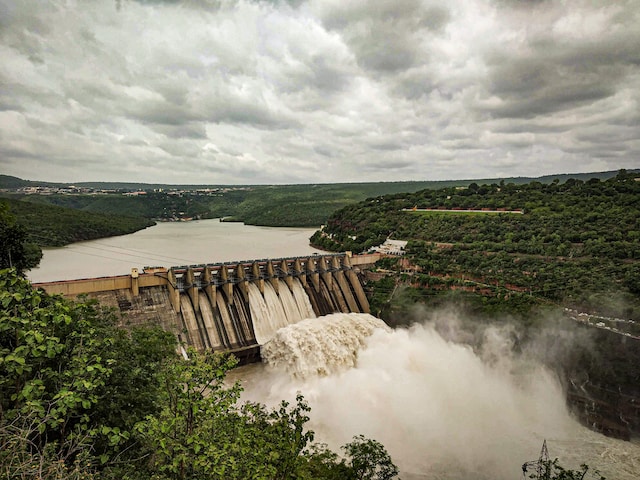
The power of water is a force to be reckoned with. Humans have been harnessing this energy for centuries in the form of hydropower. Hydropower is the process of using the energy of falling water to produce electricity. This renewable energy source is becoming increasingly popular as the world seeks to reduce its dependence on fossil fuels.
The concept of hydropower can be traced back to ancient civilizations who used waterwheels to grind grains and power machines. It wasn’t until the late 19th century that the first hydroelectric power plant was built, which marked a turning point in the history of electricity generation.
Hydropower is a clean and renewable source of energy, which makes it an attractive alternative to fossil fuels. Unlike coal and gas-fired power plants, which emit harmful greenhouse gases, hydropower produces no emissions or pollutants. The only byproduct of hydropower is water, which can be safely returned to the environment.
One of the largest hydropower projects in the world is the Three Gorges Dam in China, which generates over 22,500 megawatts of electricity. The Hoover Dam in the United States is another remarkable feat of engineering, producing enough energy to serve over one million homes. From small-scale hydro plants in rural areas to massive dams in the world’s most developed countries, hydropower has proven to be a reliable and effective source of renewable energy.
But despite its benefits, hydropower is not without controversy. Large dam projects have been criticized for their impact on wildlife, natural habitats, and communities that rely on river systems for their livelihoods. The construction of dams can cause displacement of local populations, the loss of fertile land, and damage to cultural heritage sites.
As with any form of energy production, hydropower has its pros and cons. However, with the world’s ever-increasing demand for energy, it’s clear that renewable sources like hydropower will play an increasingly important role in shaping the future of our planet. And who knows how far technology will take us in terms of developing cleaner and even more efficient ways of harnessing the power of water? The possibilities are endless.
Types of Hydropower Systems
Conventional Hydropower
Conventional hydropower systems refer to the traditional method of harnessing energy from flowing water using dams and reservoirs. The water is collected behind a dam, creating a reservoir or artificial lake. When released, the water flows through turbines, which are connected to generators that produce electricity. This system is commonly used in large-scale projects and is highly efficient in generating significant amounts of electricity.
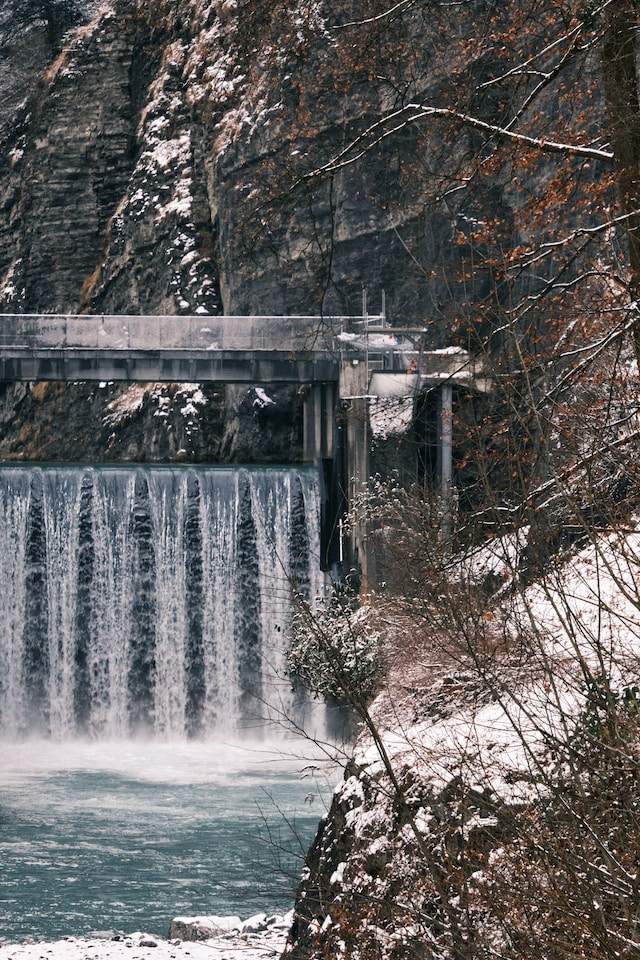
Run-of-River Systems
Run-of-river systems do not require a dam or storage reservoir. Instead, they divert a portion of the river’s flow through a channel or pipe, passing it through turbines to generate electricity. These systems allow for continuous power generation without significantly altering the natural flow of the river.
Reservoir Systems
Reservoir systems involve the construction of a dam to create a reservoir. The water stored in the reservoir is released in controlled amounts, passing through turbines to generate electricity. This system provides a reliable and consistent power supply, as the stored water can be released when electricity demand is high.
Pumped Storage Hydropower
Pumped storage hydropower acts as a large-scale battery. During periods of low electricity demand, excess electricity is used to pump water from a lower reservoir to an upper reservoir. When electricity demand rises, the stored water is released back to the lower reservoir, passing through turbines to generate electricity. This system provides a way to store energy and balance the grid during peak hours.
Small-Scale Hydropower
Small-scale hydropower systems are designed for local or off-grid power generation. They can be built on smaller rivers or streams, providing energy to remote communities or individual properties. These systems typically involve micro or mini hydropower facilities that utilize the natural flow of water to generate electricity. Small-scale systems are often more environmentally friendly than large dams, as they have less impact on river ecosystems.
Micro Hydropower
Micro hydropower systems are capable of generating electricity for individual homes, farms, or small communities. They utilize small turbines placed directly in the flowing water, producing enough power to meet localized energy needs.
Mini Hydropower
Mini hydropower systems are slightly larger than micro systems and can generate electricity for multiple homes or small businesses. They may require a small dam or diversion structure to ensure sufficient water flow to drive the turbines.
Advantages of Hydropower
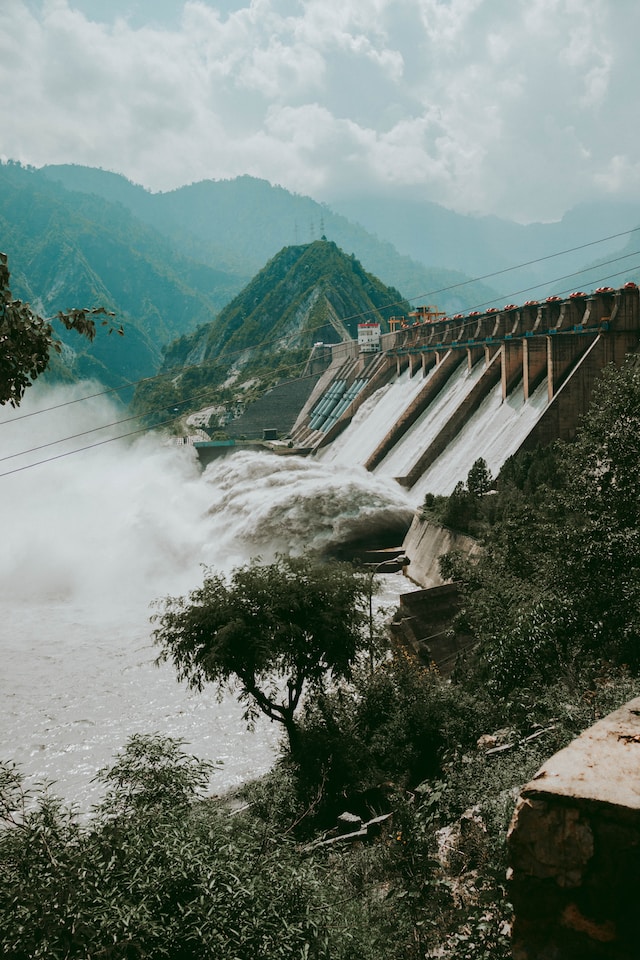
Renewable and Clean: Hydropower is a renewable energy source, which means it will never run out as long as water keeps flowing. It does not emit greenhouse gases or other pollutants, making it a clean option for electricity generation.
Reliable and Consistent: Hydropower provides a reliable source of electricity as water flow can be controlled. Unlike solar and wind energy, which are dependent on weather conditions, it can operate consistently, meeting the energy demand.
Energy Storage: Pumped storage hydropower allows for energy storage by pumping water to upper reservoirs during periods of low demand. It acts as a giant battery, providing a valuable tool for balancing the grid during peak hours.
Flood Control: Large-scale projects can help regulate water flow and prevent flooding. By controlling the release of water from reservoirs, hydropower facilities can mitigate the risk of destructive floods.
Economic Benefits: Hydropower projects often bring economic benefits to local communities. They create jobs during construction and operation, stimulate tourism, and provide a source of revenue through the sale of electricity.
Environmental Impacts
Hydropower, while considered a clean and renewable energy source, does have its environmental impact. It is important to weigh the benefits of this form of energy generation against the potential harm it may cause to ecosystems and surrounding communities.
Habitat Alteration: The construction of dams and reservoirs can lead to significant alterations in natural habitats. The flooding caused by reservoirs can result in the loss of habitat for various species, including plants, animals, and fish. It can disrupt their migration patterns and reproductive cycles, posing a threat to their survival.
Water Quality: The creation of reservoirs can also affect water quality. The standing water can lead to the accumulation of sediments and pollutants, altering the chemistry of the water body. This can have adverse effects on aquatic ecosystems, jeopardizing the health of fish and other organisms that rely on clean water to thrive.
Loss of Riparian Zones: Riparian zones, the interface between land and water, are integral to the health of river ecosystems. The construction of dams often submerges these zones, leading to their loss. Without the vegetation and natural processes that occur in riparian areas, the overall ecological balance can be disrupted.
Displacement of Communities: Large-scale projects may necessitate the displacement of communities living in the affected areas. This can result in the loss of homes, farmland, and ancestral lands. The social and economic impacts of such displacement can be profound, requiring careful consideration and mitigation measures.
Upstream and Downstream Impacts: Hydropower projects can influence not only the immediate area but also the upstream and downstream regions. Alterations in water flow and quality can affect ecosystems miles away from the dam site. Upstream, the reduced flow of water can impact aquatic life, while downstream, changes in flow can disrupt sediment transport and nutrient cycles.
Methane Emissions: While it is considered a clean energy source in terms of carbon emissions, large reservoirs can contribute to the release of methane, a potent greenhouse gas.
Organic matter trapped in the reservoirs decomposes under anaerobic conditions, leading to the production of methane. However, the overall greenhouse gas emissions from hydropower are significantly lower than those of fossil fuel power plants.
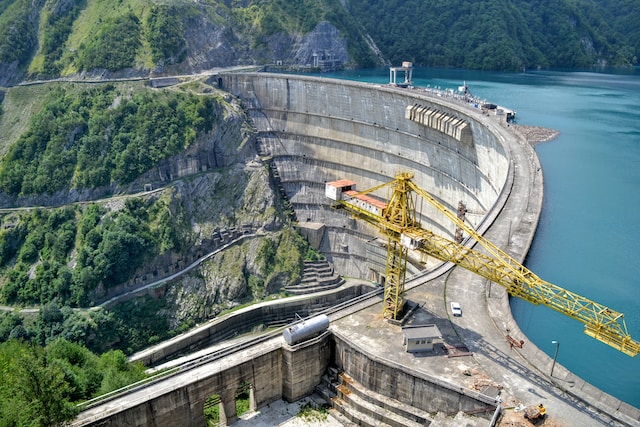
Cultural and Historical Impact: The construction of dams can also result in the submersion or destruction of cultural and historical sites. These sites can hold great significance to local communities and the broader collective human history. Preserving and protecting these sites should be a priority when planning hydropower projects.
Considering these environmental impacts, it is crucial to carefully assess and mitigate the potential risks associated with this renewable energy. Ultimately, as technology advances, the design and operation of hydropower facilities should strive to strike a balance between energy generation and environmental conservation, ensuring a sustainable future for both ecosystems and societies.
Global Trends
Increasing Capacity
Hydropower has been experiencing a steady growth in capacity worldwide. According to the International Hydropower Association, global capacity reached 1,308 GW by the end of 2020. This capacity is expected to further increase in the coming years as more countries invest in renewable energy sources.
Shift towards Small-Scale Systems
While large-scale projects still dominate the sector, there has been a notable shift towards small-scale systems. These systems are seen as more environmentally friendly and can provide localized energy solutions. Many developing countries are adopting small-scale hydropower to meet their energy needs in remote areas.
Decentralization of Power Generation
The decentralization of power generation is a significant trend in the renewable energy sector, including hydropower. This involves a shift away from centralized power plants towards distributed generation systems, such as small-scale projects. Decentralization allows for greater energy independence and promotes local community involvement.
Integration with Other Renewable Sources
Hydropower is increasingly being integrated with other renewable energy sources to create hybrid systems. For instance, it can complement intermittent sources like solar and wind by providing steady and reliable electricity generation. These hybrid systems help overcome the challenges posed by weather-dependent renewables.
Innovative Technologies
As technology continues to advance, new innovations are emerging in the field. Floating hydropower, for instance, involves placing turbines on floating platforms, allowing for the generation of electricity in areas with limited land availability. These innovations aim to improve efficiency, reduce environmental impact, and expand the potential for energy generation.
Upgrading Existing Infrastructure
Instead of building new dams and plants, there has been a growing trend of upgrading and modernizing existing infrastructure. This approach maximizes the potential of already established sites and reduces the environmental impact of new construction.
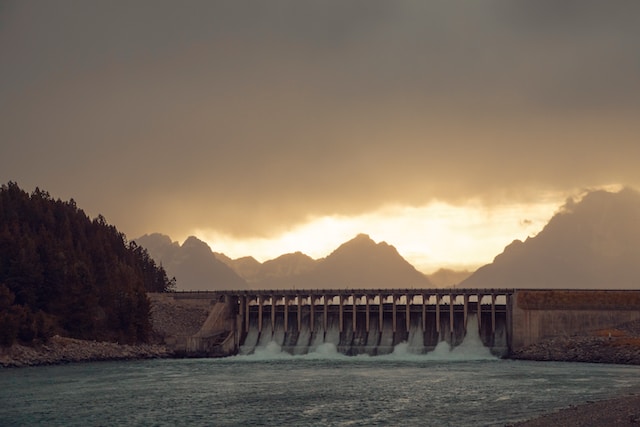
Environmental Sustainability
Environmental sustainability is a central focus in the development of hydropower projects. To mitigate the environmental impact, several measures are being implemented, such as fish ladders and fish-friendly turbine designs to ensure the safe migration of aquatic species. Environmental impact assessments and comprehensive planning are becoming standard practices for new projects.
Collaboration and International Cooperation
Hydropower development often requires international cooperation and collaboration. Shared water resources, transboundary rivers, and cross-border projects demand collaboration among countries for sustainable management. Collaborative efforts aim to minimize conflicts, ensure equitable distribution of benefits, and promote the sustainable development of more resources.
Embracing Resilience
Climate change poses challenges to hydropower operations due to variations in water availability and extreme weather events. To ensure the sector’s resilience, new projects are incorporating climate change adaptation strategies and considering long-term water resource management. This resilience approach allows hydropower to continue to be a reliable and sustainable source of energy.
Financial Innovation
The financing landscape for hydropower projects is evolving, with an increasing focus on attracting private investments. Innovative financing mechanisms, such as green bonds, climate funds, and public-private partnerships, are being used to fund projects. This shift in financing strategies aims to mobilize capital and accelerate the deployment of hydropower projects worldwide.
Hydropower is a powerful and renewable source of energy that has been harnessed by humans for centuries. It offers numerous benefits, however, it is not without its environmental and social impacts. Despite these challenges, it remains a vital component of the global energy mix, and its potential will continue to expand as we explore new innovations and integrate it with other renewable energy sources. With careful consideration and a forward-thinking approach, hydropower will play a crucial role in shaping the future of clean and sustainable energy.
